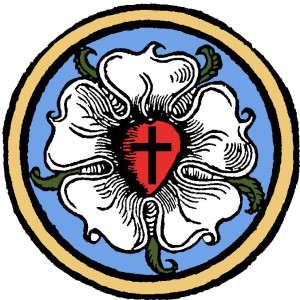
This Sunday is known either as Palm Sunday or the Sunday of the Passion, at the beginning of Holy Week. There are quite a number of possible readings, depending on the emphasis a particular congregation wishes to make for this day. The Passion History readings are very long, and it would take a whole Lenten season to talk about what they say. I will simply list these Gospel readings now, and you are encouraged to read them on your own in the week ahead: Matthew 26:1-27:66 or Matthew 27:11-66 or John 12:20-43. I will comment briefly only on the John 12 passage.
There are two possible choices for the Psalm reading, too. Psalm 118:19-29 fits best if there is a Palm Sunday emphasis. This is one of the psalms that Jewish people spoke or sang as they went up to Jerusalem for the Passover festival and entered the gates of the city. They may have been thinking of this psalm as Jesus also entered Jerusalem that day. Many of the verses are prophetic references to Him. Jesus was the “Stone” the builders rejected, who became the “Cornerstone” for the Christian faith, as the one who brought us our “salvation.” This was “the Lord’s doing,” as He sent His Son to do the work of saving us. The “hosannas” sung that day to Jesus are literally the Hebrew form of the words, “Save us, O Lord!” - and Jesus went to the cross to do just that, later that week. Jesus truly was “the blessed one who came in the Name of the Lord ”for our benefit. He was and is “God“ the Son, the “Light” of the world, and we can only “thank“ and praise Him for “His steadfast love,” and sacrifice of His life for us.
Psalm 31:9-16 is an alternative reading and fits best with the Passion History readings. This psalm predicts the agony and sorrow Christ went through for us. David, the author, had plenty of sins, “iniquities,” as we also do, but Jesus took those sins upon Himself, as if they were His own, and suffered and died in payment for them, in our place. He became a “reproach,” even to those close to him, who ran away from Him. People “persecuted” Him and “plotted to take His life.” “But He still trusted in His heavenly Father, His Lord, as His “Servant” Savior, who would eventually be “saved” Himself by God’s ‘steadfast love,” as shown by His being raised from the dead on Easter.
The Old Testament lesson is Isaiah 50:4-9a, one of the Servant Songs of the coming Savior, Jesus, who would teach God’s Word and will, as He has been taught by His Lord God. Jesus would listen and not be rebellious to His Lord, even though it would mean being struck and spit upon and disgraced, etc., by others. He would “set His face like flint” to go to Jerusalem to suffer and die. He would be “declared guilty” by His enemies, but not by the Lord God, who would “vindicate” Him and ultimately “not put Him to shame.”
The Epistle lesson is from Philippians 2:5-11, which makes it clear that God the Son was willing to do His saving work for us. Though He was God, He humbled Himself and became a real human man and our “Servant” and became “obedient to the point of death, even death on a cross” for our sake and our salvation. He was then “exalted” in His resurrection and is the Name by which we can all be saved, by “confessing that He is Lord, to the glory of God the Father.”
The Gospel lesson I’ll comment on very briefly is from John 12. John 12:12-19 tells the Palm Sunday story. Jesus came into Jerusalem, fulfilling more Old Testament Scripture, as He rode into Jerusalem humbly on a donkey’s colt, as our Savior King. John tells that the disciples did not really understand what was going on and that many who came to see Jesus came just because they had heard He had raised Lazarus from the dead. The people wanted to see a miracle worker. John 12:20-26 tells that even some Greek people wanted to see Jesus; but He instead talks about His coming death. He would be like a seed planted in the ground, which then springs forth with new life. In v.27-36, Jesus says that He had come to this crucial point where He would “glorify His Father’s Name,“ by being “lifted up from the earth.” The people did not understand that He was describing His death by crucifixion. Through that death (and resurrection), he would seek to “draw all people to Himself,” as their Savior. He was (and is) the Light for the world, and said, “Believe in the Light, that you may become sons of light.” Sadly, John tells in v.37-43 that there were Old Testament predictions that many people would still “not believe in Jesus,” even with the signs and miracles He did and His sharing of the true Word of God. There would also be those who wanted to believe, but would not “confess their belief,” because they feared the judgment of their religious leaders, who opposed Jesus. They loved “glory from other men,” more that they loved “the glory that came from God.” Can and does that still happen today?
More Episodes
 2023-10-25
2023-10-25
 6
6
 2023-10-18
2023-10-18
 5
5
 2023-10-18
2023-10-18
 6
6
 2023-10-11
2023-10-11
 5
5
 2023-10-11
2023-10-11
 27
27
 2023-10-03
2023-10-03
 6
6
 2023-10-03
2023-10-03
 7
7
 2023-09-29
2023-09-29
 6
6
 2023-09-29
2023-09-29
 4
4
 2023-09-18
2023-09-18
 9
9
 2023-09-18
2023-09-18
 6
6
 2023-09-15
2023-09-15
 4
4
Create your
podcast in
minutes
- Full-featured podcast site
- Unlimited storage and bandwidth
- Comprehensive podcast stats
- Distribute to Apple Podcasts, Spotify, and more
- Make money with your podcast
It is Free
- Privacy Policy
- Cookie Policy
- Terms of Use
- Consent Preferences
- Copyright © 2015-2024 Podbean.com






